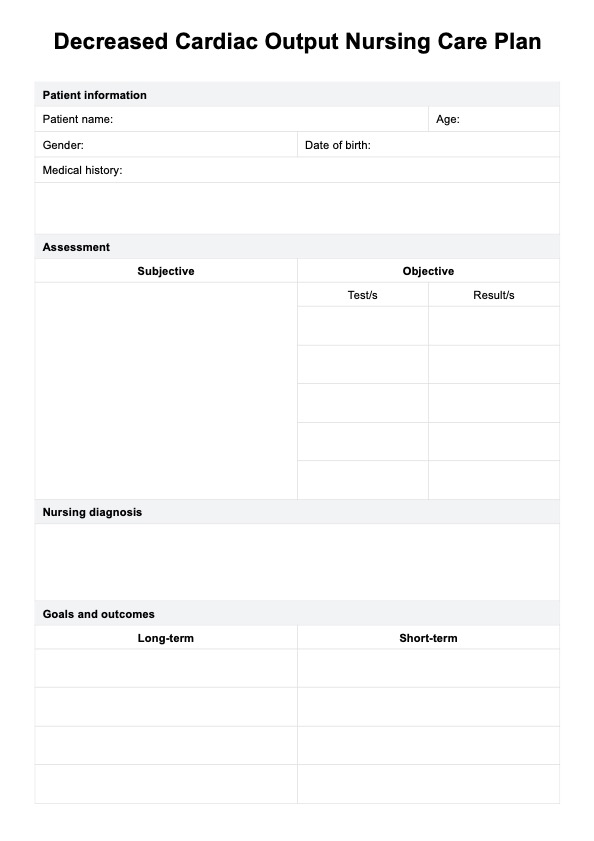To create a comprehensive nursing care plan for cardiac output management, simply create a customized plan from the template provided by Carepatron and cater to your patient's needs through the key aspects of assessment, diagnosis, planning, intervention, and evaluation.

Decreased Cardiac Output Nursing Care Plan
Utilize this Decreased Cardiac Output Nursing Care Plan guide to understand the ins and outs of effective assessment and intervention.
Use Template
Decreased Cardiac Output Nursing Care Plan Template
Commonly asked questions
These valuable plan templates can be used at any point of the treatment journey for a patient who has had a cardiac injury or is at risk of developing one.
Nursing care plan templates are used to plan efficient and confident care delivery. They are designed to be customized to meet the individual patient's needs.
EHR and practice management software
Get started for free
*No credit card required
Free
$0/usd
Unlimited clients
Telehealth
1GB of storage
Client portal text
Automated billing and online payments











